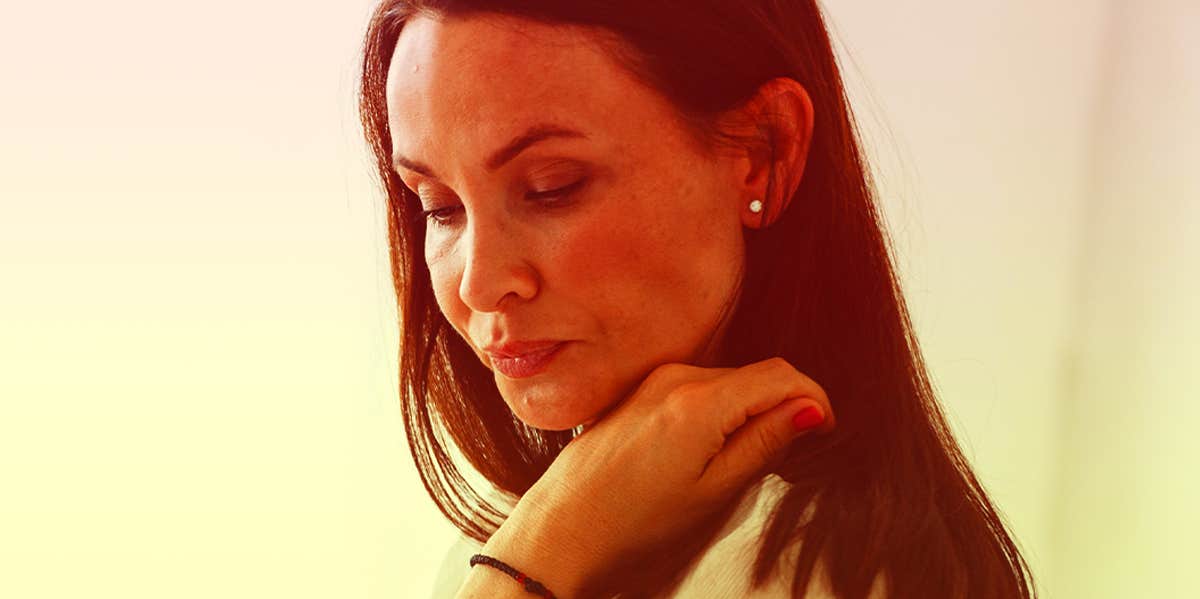The Value Of A Formal ADHD Diagnosis (& Why TikTok Can't Give You What You Need)
Why women, in particular, need to fight so hard for an ADHD diagnosis.
 Maksim Toome / Shutterstock
Maksim Toome / Shutterstock The disparity between diagnoses of ADHD for men and women (and boys and girls) is a big topic in women's health. I recently had a conversation with a woman who experienced this first-hand.
"I discovered I had ADHD about 10 years ago when my daughter was diagnosed," said the woman, whom I will call Denise.
She was never formally diagnosed but felt it was obvious that she would be once she learned the details of her daughter's ADHD. At 50 years old, she wondered if there was a point to being diagnosed.
Is there a benefit, besides medication, to being formally diagnosed with ADHD?
My response and associated research can be found below. The bottom line is research has shown that boys are far more likely to be diagnosed with ADHD than girls.
Why is that? And what does it mean for women who remain undiagnosed until later in life?
Let's take a look at all of this.
Why are women so often overlooked when diagnosing ADHD?
This is an important question. ADHD in women can look very different than in men, which is why it is so often misunderstood and misdiagnosed. Let’s look at ADHD in girls and women in context.
Most of the research about ADHD has long been centered on males and the externalizing symptoms of ADHD: hyperactivity, impulsiveness, aggression, fidgeting, excessive movement, visible restlessness, disorganization, loudness, trouble waiting, interrupting, and over-talking.
Boys are more likely to be diagnosed with ADHD than girls (12.9 percent compared to 5.6 percent).
ADHD is different for girls, too
But ADHD manifests differently in girls and women, which is why it tends to be diagnosed later. Girls are far more likely to experience the internalizing symptoms of ADHD: excessive talking, tardiness, disorganization, inner restlessness, distractedness, overwhelm, perfectionism, self-harm, social awkwardness, dreaminess, or early sexual activity. These traits are less disruptive in a classroom, so girls are less likely to be referred by educators for an evaluation.
In addition, many girls develop strategies to overcompensate for their struggles with inattention and mask their academic and/or social difficulties. As they mature and the demands on their executive functioning skills intensify, their coping methods are less effective. They become overwhelmed, anxious, or depressed. Frequently, girls and women are referred for these mood conditions or self-harming behaviors, and their attention issues are overlooked.
Hormonal shifts and ADHD
In addition, hormonal shifts in the menstrual cycle affect the symptoms of ADHD, increasing distractibility, mood changes, and forgetfulness. The onset of perimenopause and menopause can lead to extreme mood and cognitive shifts related to the declining levels of estrogen and progesterone.
Women who may have experienced mild symptoms of ADHD (known or unknown) may suddenly experience issues that seem "new" and distressing to them, including decreased working memory and time management abilities and increased impulsivity, reactivity, disorganization, and overwhelm.
Don't look for an accurate ADHD diagnosis on social media
With the popularity of TikTok and other social media outlets, many women have been diagnosing themselves.
In a recent study by Anthony Yeung, Enoch Ng, et. al., the authors reviewed 100 videos and found that 52 percent were misleading and 71 percent misattributed symptoms to ADHD.
I believe very strongly in the value of obtaining an accurate diagnosis from a mental health professional rather than a video. It’s important to discuss the symptoms and patterns of ADHD in your life with someone who is trained in this area, whether or not you decide to pursue medication.
If you obtain a psychoeducation evaluation, you will learn much about how your brain works and fully understand strengths and challenges. If you don’t, you can still assess your executive functioning skills with rating scales that a professional will explain.
Your ADHD likely was present when you were younger, just like your daughter. But people knew so much less about ADHD in women and girls then. One study found that 74 percent of girls diagnosed with ADHD in childhood persisted into adulthood.
Looking back on some of your previous challenges in school, at home, or with peers now, with the new information you have about ADHD in girls and women, can put many things into perspective.
For many women, a formal ADHD diagnosis brings relief and context to behaviors that have long been puzzling. For others, there is grief about the years they lost, feeling misunderstood.
The value of a formal ADHD diagnosis
I strongly encourage you to find someone to work with you who knows about ADHD in women.
This is essential to receiving the help you need to accept the wonderful, unique brain you have. Instead of listening to the inner critic and its messages of doubt and judgment, learn the executive functioning skills you need to live your best life as a woman with ADHD.
Join a group, listen to podcasts, seek a knowledgeable therapist or coach, and practice radical acceptance. Connect with others who have shared a similar journey, so reach out to the sisterhood of neurodivergent women. You are not alone.
Sharon Saline, Psy.D., is an international lecturer and workshop, facilitator. She has focused her work on ADHD, anxiety, learning differences, and mental health challenges and their impact on the school and family dynamics for more than 30 years.

